
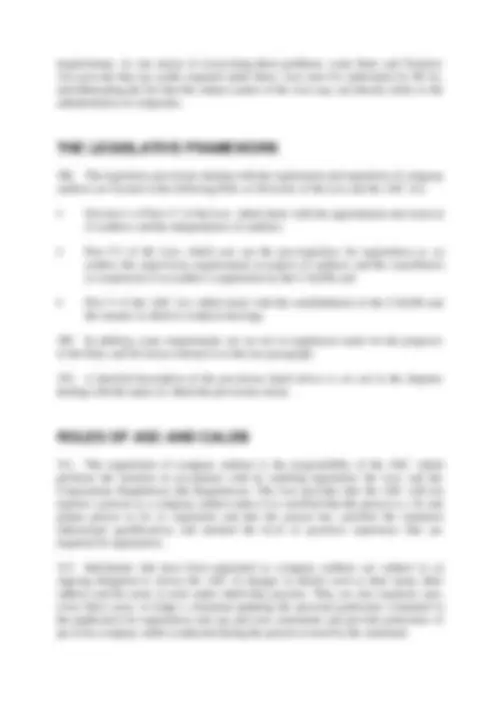
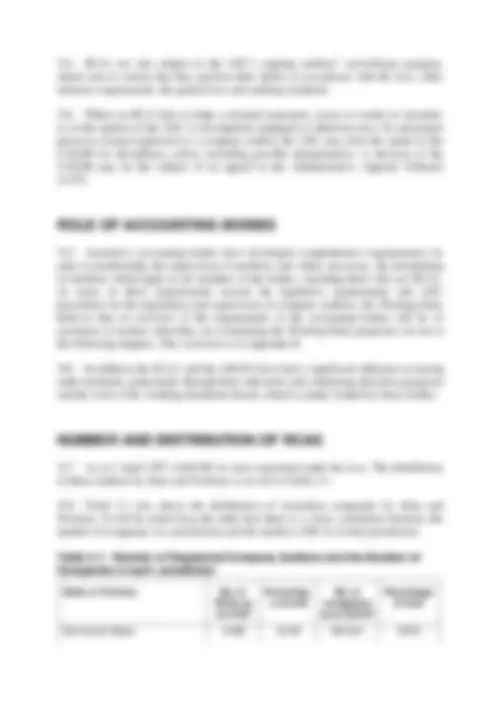
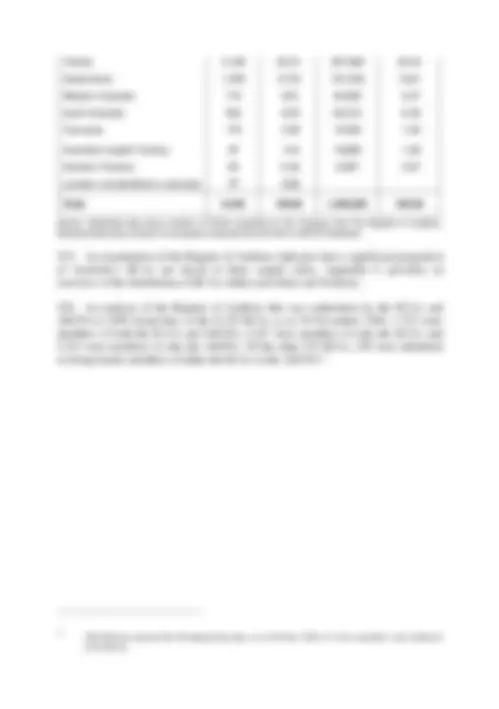
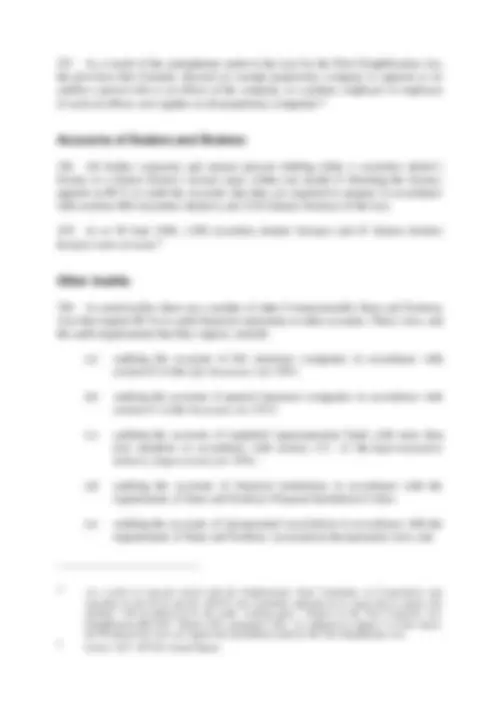
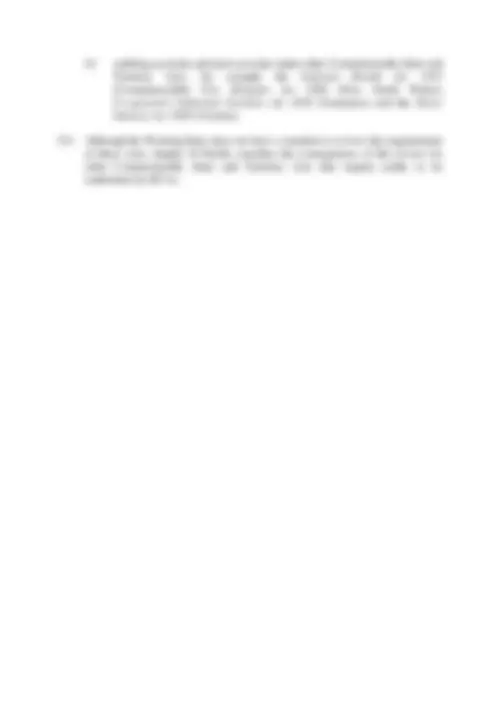


Study with the several resources on Docsity

Earn points by helping other students or get them with a premium plan


Prepare for your exams
Study with the several resources on Docsity

Earn points to download
Earn points by helping other students or get them with a premium plan
Community
Ask the community for help and clear up your study doubts
Discover the best universities in your country according to Docsity users
Free resources
Download our free guides on studying techniques, anxiety management strategies, and thesis advice from Docsity tutors
An overview of the historical background and institutional arrangements for the registration and regulation of company auditors in Australia. It discusses the rationale for registering company auditors, the early requirements for their registration, and the ongoing obligations and surveillance programs. The document also mentions the distribution of registered company auditors and the types of work they undertake.
Typology: Lecture notes
1 / 9

This page cannot be seen from the preview
Don't miss anything!






Page 27
The system of auditing accounts of public companies at the present time, as honourable members know, is by no means satisfactory. Auditors are called in who are selected in the first instance, perhaps, not by reason of any particular competence they may possess, but because they are personal friends or, it may be, relatives of the directors or of the manager, whose accounts they have to overlook and certify to; and we have known instances in this colony where men of by no means unblemished character, but whose sole recommendation was their relationship to the directors or to the manager, have been called in to certify the correctness of the accounts...Honourable members will at once admit that auditors have been far too slovenly in their work in the past. I am not speaking of all auditors, of course, because we have notable exceptions to the general rule, but in many institutions the auditors have evidently thought that their chief duties
were fulfilled by a perfunctory examination of the books, and after all they merely certified that the accounts were correct according to the books... 1
(a) holding a certificate of competency granted by the Municipal Auditors’ Board pursuant to the Local Government Act;
(b) membership of accounting bodies such as the Incorporated Institute of Accountants Victoria or the Australian Institute of Incorporated Accountants;
(c) having, within five years before the commencement of the Act, practised in Victoria for at least three years as an auditor or accountant; or
(d) having, upon examination, satisfied the Board that he had a thorough knowledge of accounts and auditing and the provisions of the Companies Act.
(^1) Victorian Parliament (House of Assembly) Hansard, 11 June 1895, pp. 224-225. (^2) There were formerly Public Accountants Registration Boards in New South Wales and Queensland.
Table 3.1: Number of Registered Company Auditors and the Number of Companies in each Jurisdiction
State or Territory No. of RCAs as at 2/4/
Percentag e of total
No. of companies as at 22/5/
Percentage of total
New South Wales 3,588 42.69 362,521 35.
Victoria 2,186 26.01 307,860 30. Queensland 1,053 12.53 151,046 14. Western Australia 715 8.51 94,605 9. South Australia 504 6.00 64,210 6. Tasmania 175 2.08 13,292 1.
Australian Capital Territory 87 1.04 19,885 1. Northern Territory 39 0.46 6,807 0. Location not identified or overseas 57 0.
Total 8,404 100.00 1,020,226 100.
Source: Statistical data about number of RCAs compiled by The Treasury from the Register of Auditors. Statistical data about number of companies extracted from the ASC’s ASCOT database.
(^3) The NIA has advised the Working Party that, as at 30 June 1996, 57 of its members were believed to be RCAs.
(c) it is required by 5 per cent or more of shareholders or the ASC to prepare audited financial statements.
(a) the expected costs of complying with the audit requirements;
(b) the expected benefits of having the company or companies comply with the audit requirements; and
(c) any practical difficulties that the company or companies face in complying with the audit requirements (for example, in the first year to which the audit requirements apply to the company or where the company or companies are likely to move frequently between the large and small proprietary company categories).
company must be covered by consolidated accounts of a parent company), together with two other orders relating to small proprietary companies which are controlled by foreign companies: (a) 97/0565 which provides relief from the requirement for such a company to prepare and lodge accounts and to have them audited where the company is not part of a large group (ie the company, its siblings formed or operating in Australia, and their controlled entities are small when the section 45A test is applied to them on a combined basis); (b) 97/0567 which provides relief from the requirement to have audited accounts on a similar basis to the relief previously provided to large proprietary companies pursuant to Class Order 96/1850. (^7) The estimate of 25,000 companies has been derived as follows: 18,000 public companies and 7,000 proprietary companies. By way of comparison, it has been estimated that as at 30 June 1994, prior to the introduction of the large/small test for determining the reporting and audit obligations of proprietary companies, 60,000 companies had auditors. This figure was derived as follows: 17,000 public companies, 23,000 non-exempt proprietary companies and 20,000 exempt proprietary companies.
(a) auditing the accounts of life insurance companies in accordance with section 83 of the Life Insurance Act 1995 ;
(b) auditing the accounts of general insurance companies in accordance with section 47 of the Insurance Act 1973 ;
(c) auditing the accounts of regulated superannuation funds with more than four members in accordance with section 113 of the Superannuation Industry (Supervision) Act 1993 ;
(d) auditing the accounts of financial institutions in accordance with the requirements of State and Territory Financial Institutions Codes;
(e) auditing the accounts of incorporated associations in accordance with the requirements of State and Territory Associations Incorporation Acts; and
(^8) As a result of concerns raised with the Parliamentary Joint Committee on Corporations and Securities by the ICAA and the ASCPA, the Committee indicated in its report that it expects the problem ‘will be addressed by the audit...working party’ (‘Report on the First Corporate Law Simplification Bill 1994’, March 1995, paragraph 2.68). As explained in chapter 9 of this report, the Working Party does not support the amendment made by the First Simplification Act. (^9) Source: ASC 1995-96 Annual Report.